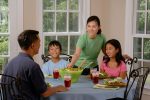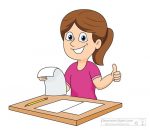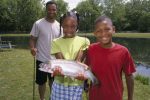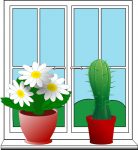This week our youngest students are starting work on their Class Play, slightly older students are choosing a family group from around the world for a role play activity and our oldest students are holding a Class Election! What an activity-filled week!
Foundation/Prep/Kindy to Year 3

Our youngest students in standalone Foundation/Prep/Kindy classes (Unit F.4) and those in integrated classes with Year 1 students (Unit F-1.4) are starting activities for their Class Play, People in the Past. Resources are provided for students to choose a character, based on the stories read in Week 1 of this term. The students can choose to learn a simple line of text, just talk about their character, make up their own play, or draw pictures if they prefer not to dress up. Resources are provided for costume ideas for each character, as well as props, which can all be made from craft materials, mostly paper cut-outs coloured in and glued onto card. Teachers can use these ideas to discuss the different ways of life and material culture associated with people around the world at different periods in the past. The activities assist students to more deeply engage with the practical issues of life in the past.
 Students in Years 1 (Unit 1.4), 2 (Unit 2.4) and 3 (Unit 3.4) are also expanding on the stories covered in Week 1. The resource, Different Families Around the World, examines family structures in the same parts of the world as in the stories from Week 1. In groups, the students choose a family group for a role play activity – students choose family members within the family group. Students in Year 1 compare these family groups to their own families – what is similar and what is different? Students in Year 2 are also considering the places special to these families. Students in Year 3 consider the family as part of the community and what aspects are similar or dissimilar to Australia. Over coming weeks students will develop a role play/ dramatisation or presentation about their chosen family group, highlighting aspects covered during the term’s work. Students need to consider and represent where these families live, what places they frequent, what their lifestyles are like (including celebrations) and the roles of different family members in the home and in the community.
Students in Years 1 (Unit 1.4), 2 (Unit 2.4) and 3 (Unit 3.4) are also expanding on the stories covered in Week 1. The resource, Different Families Around the World, examines family structures in the same parts of the world as in the stories from Week 1. In groups, the students choose a family group for a role play activity – students choose family members within the family group. Students in Year 1 compare these family groups to their own families – what is similar and what is different? Students in Year 2 are also considering the places special to these families. Students in Year 3 consider the family as part of the community and what aspects are similar or dissimilar to Australia. Over coming weeks students will develop a role play/ dramatisation or presentation about their chosen family group, highlighting aspects covered during the term’s work. Students need to consider and represent where these families live, what places they frequent, what their lifestyles are like (including celebrations) and the roles of different family members in the home and in the community.
Years 3 to 6
 Students in Years 3 (Unit 3.8), 4 (Unit 4.4), 5 (Unit 5.4) and 6 (Unit 6.4) are holding their Class Election this week. Before voting begins, the class does an activity demonstrating voting by a Show of Hands. The teacher then presents information from the resource: Australia’s Secret Ballot so that the class can discuss the pros and cons of different voting systems, including the secret ballot. Ballot papers are then handed out and names checked off the electoral roll by the Election Officers. Students vote and place their ballots in ballot boxes. All ballot boxes are sealed at the conclusion of voting and a check is made for missing ballot. Finally the Election Officers open the ballot boxes and a First Preference Count is undertaken openly, in front of the whole class. The First Preference Count gives preliminary results. However, the full preferences count will be made in the next lesson, enabling students to have time to absorb the flow of events in greater detail.
Students in Years 3 (Unit 3.8), 4 (Unit 4.4), 5 (Unit 5.4) and 6 (Unit 6.4) are holding their Class Election this week. Before voting begins, the class does an activity demonstrating voting by a Show of Hands. The teacher then presents information from the resource: Australia’s Secret Ballot so that the class can discuss the pros and cons of different voting systems, including the secret ballot. Ballot papers are then handed out and names checked off the electoral roll by the Election Officers. Students vote and place their ballots in ballot boxes. All ballot boxes are sealed at the conclusion of voting and a check is made for missing ballot. Finally the Election Officers open the ballot boxes and a First Preference Count is undertaken openly, in front of the whole class. The First Preference Count gives preliminary results. However, the full preferences count will be made in the next lesson, enabling students to have time to absorb the flow of events in greater detail.
As well as assisting students to consider the reasons for a secret ballot and preferential voting, these activities prepare students to become active members of their community in the future and to fully understand Australia’s voting system, before they need to take part in it.

 Our youngest students in Foundaton/Prep/Kindy (
Our youngest students in Foundaton/Prep/Kindy ( Years 3 to 6
Years 3 to 6 Students in Years 3 (
Students in Years 3 ( Students in standalone Foundation/Prep/Kindy (
Students in standalone Foundation/Prep/Kindy ( Students in Years 3 (
Students in Years 3 ( Students in standalone Foundation/Prep/Kindy classes (
Students in standalone Foundation/Prep/Kindy classes ( Students in Year 3 doing
Students in Year 3 doing  The last term of the school year – traditionally far too short and crowded with many events, both at and outside of school. OpenSTEM’s® Understanding Our World® program for HASS + Science ensures that not only are the students kept engaged with interesting material, but that teachers can relax, knowing that all curriculum-relevant material is covered by the middle of the term, ensuring enough time for marking and preparation of reports. Furthermore, following the OpenSTEM® Understanding Our World® program across an entire year guarantees that your students have met the curriculum requirements for all of History, Geography, Civics and Citizenship, Economics and Business (HASS) and Science for the whole year, matched to their year-level, even in multi-year level classes. This term our youngest students are reviewing some of the material covered earlier in the year and then preparing for a Play (with props and dress-ups) matched to this material. Students in Years 1 to 3 examine modern families around the world and then prepare a short presentation or dramatisation based on what they have learned. Older students are studying migrants and cultural identity and using the information to plan an end-of-year celebration of cultural diversity. These students also hold a class election, with preferential voting.
The last term of the school year – traditionally far too short and crowded with many events, both at and outside of school. OpenSTEM’s® Understanding Our World® program for HASS + Science ensures that not only are the students kept engaged with interesting material, but that teachers can relax, knowing that all curriculum-relevant material is covered by the middle of the term, ensuring enough time for marking and preparation of reports. Furthermore, following the OpenSTEM® Understanding Our World® program across an entire year guarantees that your students have met the curriculum requirements for all of History, Geography, Civics and Citizenship, Economics and Business (HASS) and Science for the whole year, matched to their year-level, even in multi-year level classes. This term our youngest students are reviewing some of the material covered earlier in the year and then preparing for a Play (with props and dress-ups) matched to this material. Students in Years 1 to 3 examine modern families around the world and then prepare a short presentation or dramatisation based on what they have learned. Older students are studying migrants and cultural identity and using the information to plan an end-of-year celebration of cultural diversity. These students also hold a class election, with preferential voting. Our youngest students – those in Foundation/Prep/Kindy (
Our youngest students – those in Foundation/Prep/Kindy ( Students in Years 3 (
Students in Years 3 (
The kit was easy while still fun to build (except maybe for fitting the wires in). This was a fun…
Florence (15) and Keito (14), students at Hakusan International School